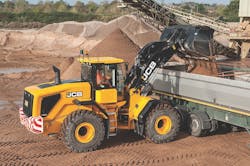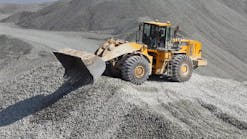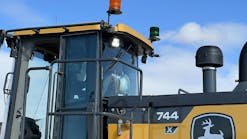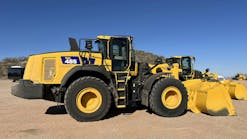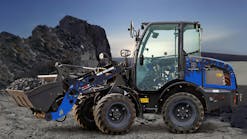JCB 457 Wheel Loader with CommandPlus Cab
The JCB 457 wheel loader is the first machine with the company’s new “CommandPlus” cab, and also has a new engine cover and rear counterweight design.
In addition, the 457 is the company’s first large wheel loader to meet Tier 4-Final emissions standards, with the adoption of a 258-horsepower MTU diesel engine. The engine contributes to a fuel savings of around 16 percent compared to the previous model, according to JCB. As with other JCB machines, the engine in the 457 meets Tier 4-Final without the need for a DPF, relying on an efficient combustion process, with an SCR system and DEF.
The ROPS structure has “A” pillars that have been moved out to the same width as the rear of the cab, providing a larger interior with a panoramic front windshield. The machine features JCB’s Command Driving Position, with revised pedals, a new adjustable steering column, and seat-mounted hydraulic controls.
The 457 is available with four loader arm options to suit a range of industry applications. These include four-ram parallel lift geometry HT arms designed to provide high torque throughout the full working range. HT arms are ideal for tool carrying applications such as forks and grapples. The HT design comes in both standard and super high lift configurations, allowing the machine to load high-sided bulk trailers and to stockpile materials.
Traditional Z-bar linkage arms are designed to provide maximum breakout forces, ideal for extraction applications. Again, the Z-bar set-up is available in standard or high lift for truck or hopper loading. All loader arm options can be ordered with 2-, 3- or 4-spool hydraulic valve options to work up to two auxiliary controls simultaneously. Flow rates can also be fine-tuned through the in-cab display using the rotary control to meet attachment demand. Quick-hitches are available for both Z-bar and HT loader arms.
